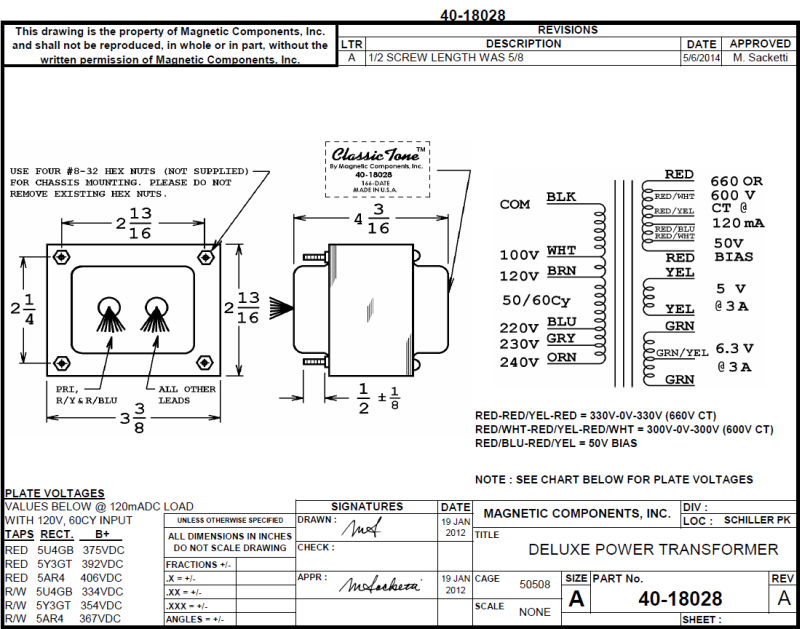I have a couple of these amps that I bought as starter kits to build 18 watt EL84 amps. The PT's are from China and have universal Primary taps. On the transformer it says Input: 100v | 120v | 220v | 230v | 240v, but gives no color code info. I have tried to contact the seller of the amp but he did not have any info. The maker of the transformer is Ningbo Chaobo Electric Co. by way of Axl Musical Instrument co. and it seems like a dead end finding info from those sources.
The primary wires are in a row: Black | Wht\Blk | White | Brown | Blue | Purple. The first logical idea for me was that: Black & Wht/Blk = 100v | Black & White = 120v | Black & Brown = 220v | Black & Blue = 230v | Black & Purple = 240v. Now that is just an idea of what it could be and just putting it out there as a thought. The DC resistance is: Black & Wht/Blk = 2.8ohms | Black & White = 3.4ohms | Black & Brown = 15.6ohms | Black & Blue = 16.7ohms | Black & Purple = 18.2ohms. Thankfully the secondary side will be much easier to sort out and I could always inject AC (low voltages) from secondary and measure voltages on the primary too. Just looking for some guidance on the matter as the best way to proceed from here. Thanks in advance for any help.
The primary wires are in a row: Black | Wht\Blk | White | Brown | Blue | Purple. The first logical idea for me was that: Black & Wht/Blk = 100v | Black & White = 120v | Black & Brown = 220v | Black & Blue = 230v | Black & Purple = 240v. Now that is just an idea of what it could be and just putting it out there as a thought. The DC resistance is: Black & Wht/Blk = 2.8ohms | Black & White = 3.4ohms | Black & Brown = 15.6ohms | Black & Blue = 16.7ohms | Black & Purple = 18.2ohms. Thankfully the secondary side will be much easier to sort out and I could always inject AC (low voltages) from secondary and measure voltages on the primary too. Just looking for some guidance on the matter as the best way to proceed from here. Thanks in advance for any help.

Comment